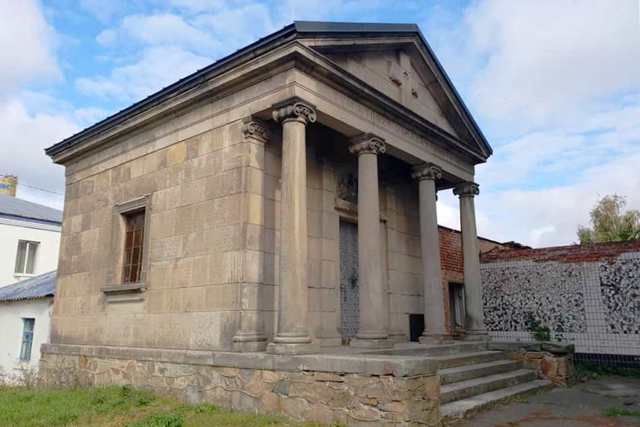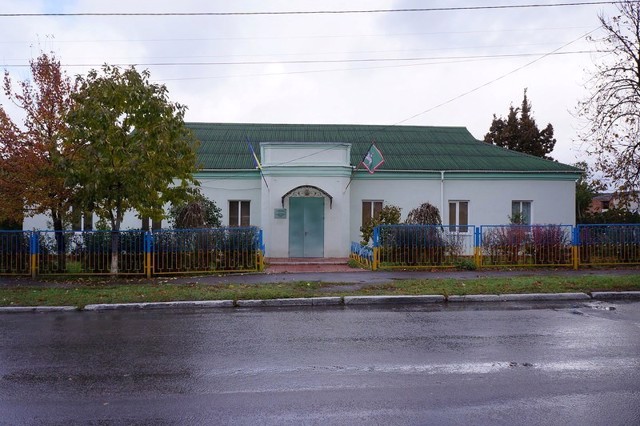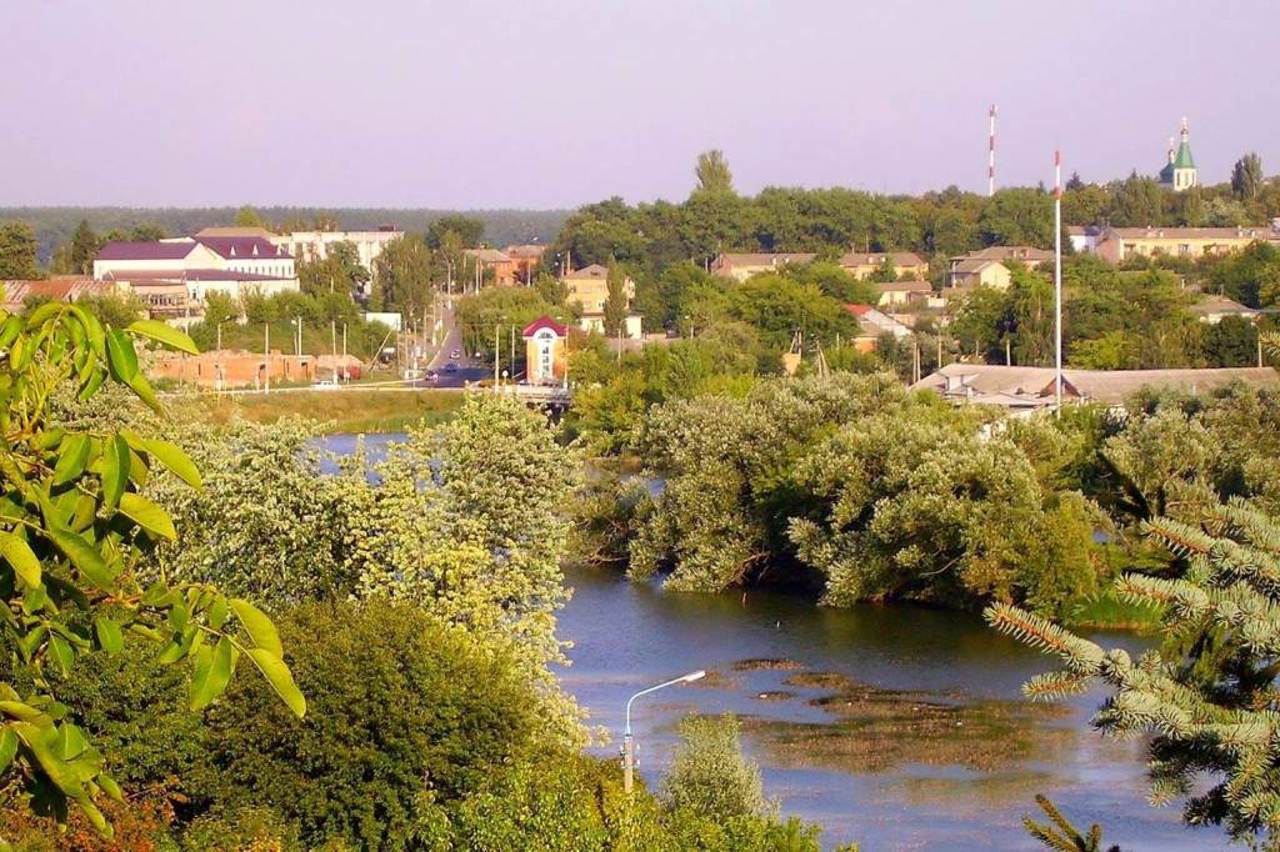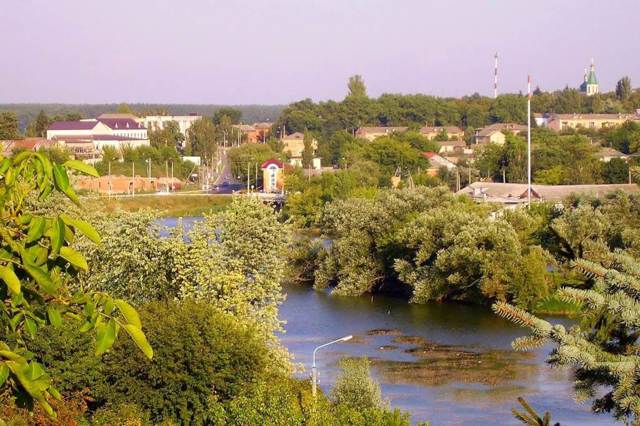Functional temporarily unavailable
General information about Tetiiv
The city Tetiiv on the Roska River is located 65 kilometers southwest of Bila Tserkva. Administratively, it is a part of the Bila Tserkva district of the Kyiv region.
The city has been known since 1185 as the Greek settlement of Tymoshnya, although archaeological materials show that life and active trade existed here even in antiquity. Local historians associate the name of the Tetiiv with the legend of the battle between the Rus and the Polovtsy, as a result of which the Polovtsian Khan Tetiy was captured here. During the Mongol-Tatar invasion in 1240, the city was completely destroyed (remains of ramparts were preserved in the Sloboda area on the left bank of the Roska).
At the end of the 16th century, Tetiiv became part of the powerful Ruthenian-Lithuanian Ostrozkyi ...
The city Tetiiv on the Roska River is located 65 kilometers southwest of Bila Tserkva. Administratively, it is a part of the Bila Tserkva district of the Kyiv region.
The city has been known since 1185 as the Greek settlement of Tymoshnya, although archaeological materials show that life and active trade existed here even in antiquity. Local historians associate the name of the Tetiiv with the legend of the battle between the Rus and the Polovtsy, as a result of which the Polovtsian Khan Tetiy was captured here. During the Mongol-Tatar invasion in 1240, the city was completely destroyed (remains of ramparts were preserved in the Sloboda area on the left bank of the Roska).
At the end of the 16th century, Tetiiv became part of the powerful Ruthenian-Lithuanian Ostrozkyi family. Prince Yanush Ostrozkyi built a new castle on the right bank of the Roska, and in 1606 Tetiiv was granted the right of Magdeburg (a memorial sign was erected).
For a long time, Tetiiv belonged to the Polish magnates Sanhushko, then Chernekhovsky, Ostrovsky, Dakhovsky, Sveykovsky. The latter built the stone church of the Blessed Virgin Mary in 1804, which was built in the Soviet times at the workshop of the Electronmash plant. Nearby, the ancient-style Assumption Chapel of the Blessed Virgin Mary, which served as the ancestral burial place of the Sveykovsky family, has been preserved.
Another architectural landmark of Tetiyev is the remains of the "Porhun" mill near the dam on Rost.
In 2020, the Wailing Wall memorial to the victims of the Jewish pogroms of 1919-1920 was opened in Tetiiv.
Day of the city of Tetiiv is the first Sunday of May.
Місто Тетіїв на річці Роська розташоване за 65 кілометрів на південний захід від Білої Церкви. Адміністративно входить до складу Білоцерківського району Київської області.
Місто відоме з 1185 року як грецьке поселення Тимошня, хоча археологічні матеріали свідчать, що життя та активна торгівля тут існували ще за часів античності. Назву Тетіїв місцеві краєзнавці пов'язують з легендою про битву русичів з половцями, внаслідок якої тут було захоплено в полон половецького хана Тетія. Під час монголо-татарської навали 1240 року місто було повністю зруйновано (залишки валів збереглися в районі Слобода на лівому березі Роськи).
Наприкінці XVI століття Тетіїв увійшов до володінь могутнього русько-литовського роду Острозьких. Князь Януш Острозький збудував новий замок на правому бе ...
Місто Тетіїв на річці Роська розташоване за 65 кілометрів на південний захід від Білої Церкви. Адміністративно входить до складу Білоцерківського району Київської області.
Місто відоме з 1185 року як грецьке поселення Тимошня, хоча археологічні матеріали свідчать, що життя та активна торгівля тут існували ще за часів античності. Назву Тетіїв місцеві краєзнавці пов'язують з легендою про битву русичів з половцями, внаслідок якої тут було захоплено в полон половецького хана Тетія. Під час монголо-татарської навали 1240 року місто було повністю зруйновано (залишки валів збереглися в районі Слобода на лівому березі Роськи).
Наприкінці XVI століття Тетіїв увійшов до володінь могутнього русько-литовського роду Острозьких. Князь Януш Острозький збудував новий замок на правому березі Роськи, і в 1606 році Тетієву було надане Магдебурзьке право (встановлено пам'ятний знак).
Протягом тривалого часу Тетіїв належав польським магнатам Сангушкам, потім Чернеховським, Островським, Даховським, Свейковським. Останні у 1804 році спорудили кам'яний костел Пресвятої Діви Марії, що за радянських часів був побудований на цех заводу "Електронмаш". Поруч збереглася каплиця Внебовзяття Пресвятої Діви Марії в античному стилі, що служила родовою усипальнею родини Свейковських.
Ще одна архітектурна пам'ятка Тетієва – залишки млина "Порхуна" біля греблі на Росьці.
2020 року в Тетіїв відкрили меморіал жертвам єврейських погромів 1919-1920 років "Стіна плачу".
День міста Тетієва – перша неділя травня.
Сплануй своє перебування у Tetiiv
What to see and where to go in Tetiiv
Tourist attractions and museums of Tetiiv

Sveikovskyi Chapel
Temple , Architecture
The tomb-chapel of the Sveikovskyi (Świejkowski) family in Tetiiv was built in 1805 next to the Church of the Assumption of the Blessed Virgin Mary, founded by them. A sculpture of Saint Yan Nepomuk once stood in front of the main entrance to the church, so the church was also called by his name.
The chapel is built in the forms of classicism and outwardly resembles an ancient temple. On the four-column Ionic portico there is an inscription in Polish: "Tym ktorzy zmartwychwstaną" ("To those who will rise"). Above the forged door is the coat of arms of the Świejkowski family.
The Sveikovskyi chapel is an architectural monument of national importance. Now it belongs to the Roman Catholic parish of All Saints in the city of Tetiiv. Holy Mass is held on Sundays.

Tetiiv People's Historical and Local Lore Museum
Museum / gallery
The Tetiiv People's History and Lore History Museum was founded in 1967. Since 1989, it has been located in the premises of a former bank from the beginning of the 20th century, opposite the Central City Park of Tetiiv.
Today, the museum's funds include more than 4,000 exhibits, which are exhibited in seven rooms. The exposition tells about the distant past of Tetiiv region, the events of the Ukrainian Revolution, the Holodomor of 1932-1933, the Second World War and post-war reconstruction.
The stand "Tetiiv at the Crossroads of the Ages" full of materials about the history of the city's development attracts attention. The "Euromaidan" and "Undeclared War" exhibitions are constantly replenished with exhibits.
Reviews Tetiiv
Geographical information about Tetiiv
| {{itemKey}} | {{itemValue}} |
|---|---|
| Region |
Kyiv |




